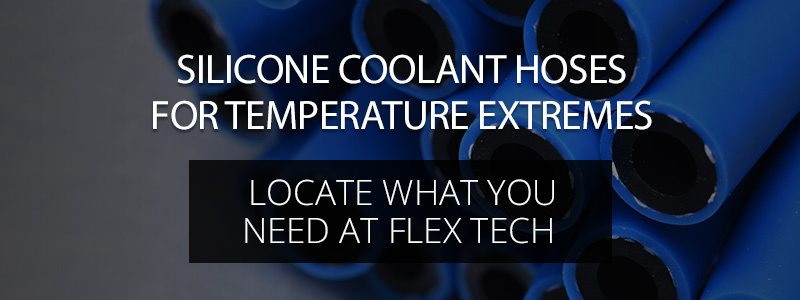
Make fire safety a priority with silicone hoses from Flex Tech!
Silicone hoses are often used in industries and applications where heat and electrical conductivity are prominent, making fire safety integral to these businesses.
Silicone hoses from Flex Tech are anti-conductive and provide high-temperature capabilities. Learn more about the difference between flame-resistant and flame-retardant in today’s post!
Flame/Fire Resistance
Heat resistance is defined by the National Fire Protection Agency (NFPA) as the ability for a product or material to withstand fire for a period of time. The products are made from materials that are inherently non-flammable or can self-extinguish.
While this may seem nondescript, essentially what it means is that the product or material can withstand the heat for some time, but over time, it will break down under extended exposure to heat and flames.
Silicone hoses that are heat-resistant are designed to withstand limited exposure to heat and fire, with temperatures reaching up to 250°F can be certified as flame-resistant.
A large number of silicone hoses are flame- or fire-resistant including our silicone heater hoses, silicone vacuum hoses, and silicone straight hoses.
Flame Retardant
Flame retardant products and materials are classified as those that can withstand direct contact with flames and still maintain their structural integrity. More specifically, the NFPA analyzes flame retardant products that are chemically treated to better slow down ignition or combustion.
You’ll see many products with an “FR,” identifying them as being flame retardant.
High-Temperature Classifications
On many Flex Tech silicone hose products, you’ll see them as being fire-resistant or with “high-temperature capabilities.” As we’ve examined the difference between flame and fire resistance vs. flame retardant, where do high-temperature properties come in?
High-temperature is a somewhat vague term especially if you’re in an industry that requires specific heat and temperature capabilities, you need finite numbers! When you’re browsing our products, most of our silicone hose products will list the temperature range they operate at and have an accompanying spec sheet.
If you have questions about the temperature ranges on our silicone hose products, you can always contact us directly for more information.
We also do custom silicone hoses that can improve heat- and fire resistance with special linings, covers, and reinforcements.
Industries and Applications Where Fire- and Heat-Resistance Matter
Silicone hoses are often used over traditional rubber because of their ability to maintain flexibility in extreme temperatures, including high heat. Rubber tends to dry out and crack, leaving industries having to replace these hoses again and again, thus driving up costs.
Silicone hoses can improve costs because of their superb quality and longevity — they’ll likely outlast all of the other parts and pieces!
Industries that take advantage of silicone’s high heat-resistance include:
- Automotive
- Aerospace
- Industrial
- Agriculture
- Medical
- Food and beverage
Many of these industries have electrical components, which exposes them and makes them vulnerable to electrical fires and flames — conductivity can become a huge concern. To reduce and mitigate fire hazards, silicone hoses can be used. They’re fire-resistant and do not encourage electrical conductivity.
If you’re in an industry where heat matters, reach out today and talk to an engineer at Flex Tech to find the perfect solution to your operations.
![]()
 Default Currency
Default Currency
 Mexican Pesos
Mexican Pesos
 Canadian Dollar
Canadian Dollar


